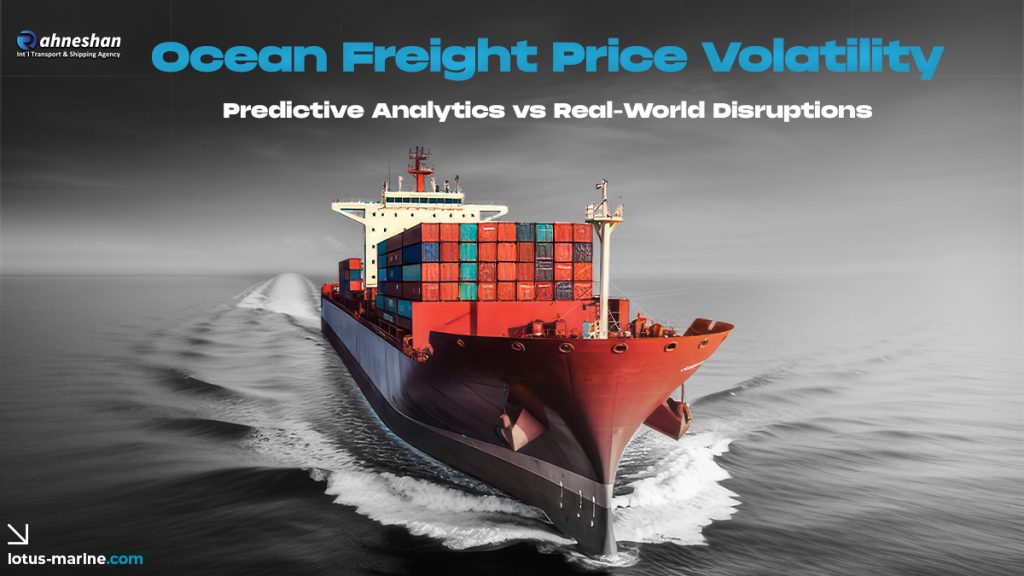Introduction
Ocean freight has always been subject to price fluctuations, but in 2025, volatility is at unprecedented levels. Global trade disruptions, environmental regulations, and geopolitical tensions continue to shape the cost of containerized shipping. While predictive analytics promises more accurate forecasting, real-world events often challenge even the most advanced models. This article explores how predictive analytics is used in ocean freight pricing and why disruptions remain a powerful wildcard.
Why Ocean Freight Prices Are Volatile
1. Geopolitical Events
Trade wars, sanctions, and conflicts can instantly reshape shipping routes and pricing.
2. Environmental Regulations
Stricter IMO 2025 emissions standards raise operational costs, directly influencing freight rates.
3. Capacity Imbalances
Overcapacity in container fleets or sudden shortages (e.g., port congestion) drive rapid price swings.
4. Climate-Driven Disruptions
Droughts in the Panama Canal, storms in the Pacific, and Arctic ice shifts impact routing and costs.
The Role of Predictive Analytics in Freight Pricing
Predictive analytics combines big data, AI, and machine learning to forecast freight rates and optimize planning.
Core Applications:
-
Demand Forecasting: Using historical trade data and economic indicators to anticipate shipping demand.
-
Route Optimization: AI models suggest alternative routes to avoid congestion or disruptions.
-
Price Modeling: Machine learning analyzes global trends to predict rate changes.
-
Risk Assessment: Identifies potential bottlenecks (e.g., port strikes, weather delays) and suggests contingency plans.
Limitations of Predictive Analytics
-
Black Swan Events: Sudden crises like pandemics or wars can’t be accurately predicted.
-
Data Gaps: Inconsistent reporting across regions weakens model accuracy.
-
Human Factors: Strikes, political decisions, or sudden policy changes remain unpredictable.
Real-World Disruptions in 2025
-
Panama Canal Drought: Reduced transit slots raised costs on U.S.–Asia routes.
-
Red Sea Geopolitical Tensions: Rerouting via the Cape of Good Hope increased transit times and fuel costs.
-
Port Congestion in Europe: Strikes in major EU ports disrupted supply chains despite predictive models warning of delays.
Balancing Analytics with Agility
While predictive analytics enhances planning, resilience requires combining data insights with flexible strategies:
-
Diversifying suppliers and shipping partners
-
Building buffer inventory for critical goods
-
Using hybrid models that combine predictive AI with human expertise
Future Outlook
By 2030, predictive analytics will be integrated with blockchain-based smart contracts, real-time IoT cargo monitoring, and climate modeling. However, human oversight and adaptive decision-making will remain essential to navigate unpredictable global events.
Conclusion
Predictive analytics provides powerful tools to anticipate and manage ocean freight price volatility, but it cannot eliminate the unpredictability of real-world disruptions. The future of freight pricing will be shaped by a hybrid model—where technology enhances foresight but human adaptability ensures resilience.
Frequently Asked Questions
1. Why are ocean freight prices so volatile?
Because of geopolitical tensions, environmental regulations, capacity issues, and climate-related disruptions.
2. How does predictive analytics help?
It uses AI and data modeling to forecast demand, optimize routes, and predict rate changes.
3. Can predictive models prevent price surges?
No, but they help shippers prepare by anticipating trends and risks.
4. What events in 2025 disrupted freight prices?
Panama Canal droughts, Red Sea tensions, and European port strikes.
5. What’s the long-term solution?
Combining predictive analytics with supply chain agility and diversification.







